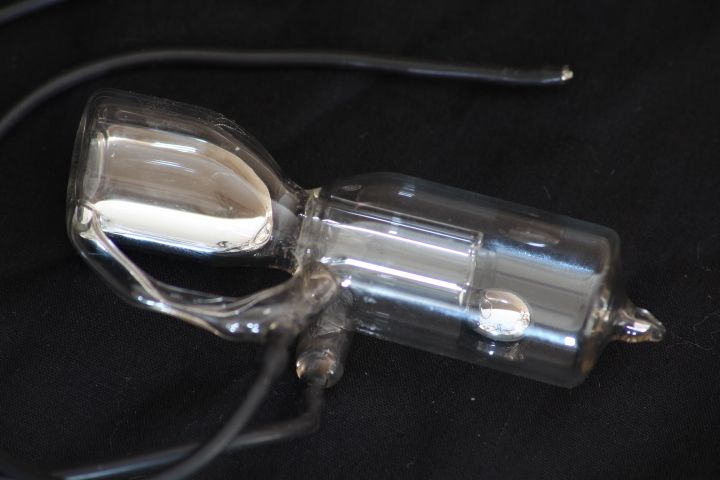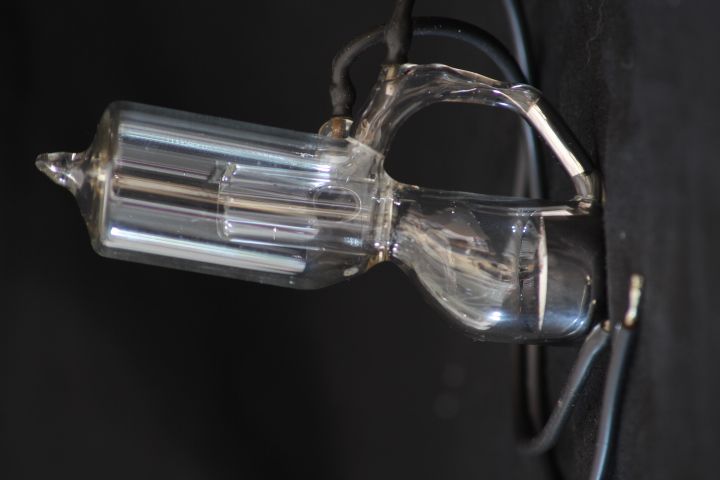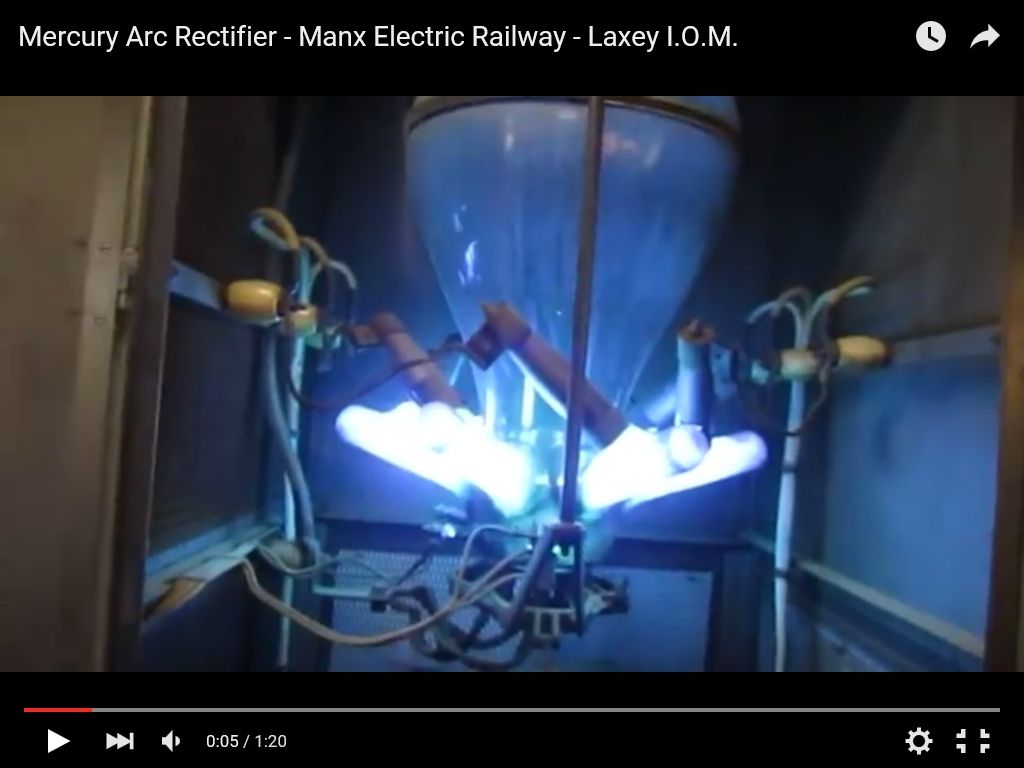Hi Sean, welcome to the forum. It's nice to have another expert to quiz!
I wonder if you recognise the pictures of this mercury timer switch as being the work of a scientific glass blower?


It's about 80mm long, the pip end tube is 21.25mm diameter and the other, lower, end is about 19.75mm diameter. The lower end is flat, but the whole assembly tilts 10 degrees towards the electrodes.
Inverting the assembly causes the mercury to pass into the other chamber through a large inner tube (about 8mm i/d). When the switch is returned to the normal position, mercury drips into the lower chamber through a pinch tube, taking about 25 seconds to drain back. During that 25 seconds the mercury makes the switch by shorting two electrodes in the top chamber.
I have 3 of them and have often wondered if they were hand made and what they were used for. Something that rotates and waits for 25 seconds before repeating I guess.
The design and construction are ingenious. If this is what you do, I'm impressed!
Regards,
Dave
 Neil Wyatt.
Neil Wyatt.








